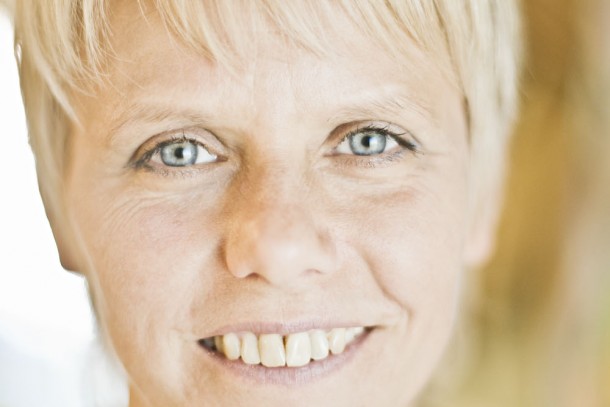19.08.2013 | Insight

The gurgle of water is drowned by the voices of spirited schoolchildren. The joy of life and discovery are tangible in the Youth Environmental Centre of St. Petersburg Vodokanal, the local waterworks.
Each year, the Centre and the museum in its vicinity attract around 200,000 visitors. About two-thirds of them are children and young people eager to explore the mysteries of the Baltic Sea.
“We have to engage in a dialogue with consumers about protecting the Baltic Sea. It’s important for the community to understand the values we stand for and the efforts we make in order to improve the quality of both drinking water and wastewaters,” says Chief Specialist Tatyana Polishchuk.
The Environmental Centre sorts under the Informational and Educational Centre of Vodokanal in St. Petersburg. Deputy Director Dmitry Troshenko plays a central role in managing the company’s public relations with foreign financiers, journalists and political delegations – the type of contacts frequently established in St. Petersburg. At the same time as the company is transforming into a real success story in the environment sector, a steady stream of official visits is received in Vodokanal’s head office on Kavalergardskaya Street. But the future is shaped by children and therefore school classes are given royal treatment at Vodokanal.
The Environmental Centre has initiated cooperation with over 800 schools in St. Petersburg. It includes field trips and training modules that complement the syllabuses in natural sciences and environmental studies.
“We tell children where we draw the drinking water from, what happens to it and how we purify it. We seek to give an overview of the natural cycle of water and how we humans affect it,” says Chief Specialist Tatyana Polishchuk.
Vodokanal’s activities constitute what is today known as Corporate Social Responsibility (CSR). The Centre employs six teachers working with environmental education on a fulltime basis. Tatyana shows us a range of highly advanced technical aids used in education: animations, digital and interactive maps, simulations of contaminated beaches and laboratories.
“Our mission is not only to explain how nature and the ecosystem work, but also demonstrate how a soiled beach may affect the lives of children. We offer them some tangible tips on what they can personally do to help save the environment,” she continues.
Water consumption is one of the themes that keeps cropping up in various contexts. Children get to figure out how much water is needed for a fiveminute shower. They measure water streams and convert them into litres and decilitres. One of the Centre’s most effective and popular teaching aids is Nevskaya Kapelka – ‘The Neva Drop’ – an animated water drop that delivers tips and advice in a highly entertaining way in animated films made by the Russian film company Ascreen.
“Today, we’ve learnt how to analyse water quality,” declares an inquiring nine-year-old girl. Her classmate, sporting a neatly ironed shirt, shows equal fervour: “I’ve learnt a lot about the natural cycle of water and how you can use shrimps to measure how clean the water is.” The pupils are from class 3B from School No. 494 in the Vyborg district in St. Petersburg. There is no mistaking the enthusiasm.
We sit down in the Centre’s laboratory, which has been especially designed with children in mind. Here, they can test how water behaves when you mix soap, sand, detergent, toilet paper or paint in it. I ask Tatyana how they balance between hope and despair. For one thing, does it make sense to talk about the progressive death of the seabed to an eight or nine-year-old?
“If we say to a sick man that he’s terminally ill, he won’t get any better for it. But we have to give children hope and offer solutions. Of course, we must talk about eutrophication and algal blooming, but we must also tell the children what they can do to improve things,” explains Polishchuk.
For many of the children visiting the Centre, the Baltic Sea is very much an abstraction. About half of them have never been to the coast or bobbed on the waves of the Gulf of Finland. One reason is the intensive algal blooming that turns the sea into a blue-green soup during the holiday season in July and August. When this happens, many families choose to swim in a nearby inland lake. Yet water quality is improving in the vicinity of St. Petersburg, albeit slowly. The inventory of seabed fauna in the eastern parts of the Gulf of Finland carried out by the Finnish Ministry of the Environment last year showed that visibility and biodiversity have improved. One of the factors contributing to this development is more efficient cleaning of wastewaters in St. Petersburg. There is hope, after all.
FOOTNOTE: NEFCO has financed a wide range of projects implemented by St. Petersburg Vodokanal. The latest of these is a project to upgrade 10 minor plants that process the wastewaters from around 410,000 people in St. Petersburg.